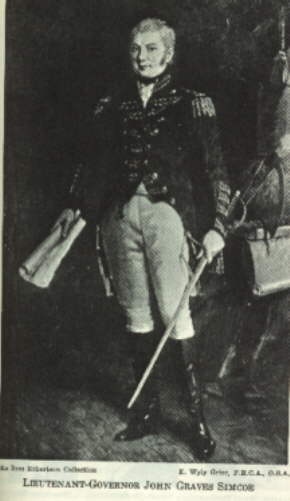|
The Starkwather Years
 
Local Events
 | First we need a brief review of the name of the town. It began as a United Empire Loyalist settlement called “Niagara”. Briefly, for the period of 1792-1796, it became “Newark”, the name chosen by Governor John Graves Simcoe, who had made it the capital of Upper Canada (Ontario). However, from 1796-1906 the name reverted to “Niagara”. When York (later Toronto) became the capital. Finally, in 1906, Niagara became, “Niagara-on-the-Lake”.
By 1818, or about the time Starkwather first opened the Niagara Apothecary, much of the town had been rebuilt after being burned by American soldiers in December 1813, during the War of 1812-15. Many of the replacement homes and buildings were built more substantially than they had been before. This construction activity certainly also stimulated the local economy. |
But a threat to the lucrative Niagara trans-shipment industry around the Falls came when the Erie Canal was completed in October 1825. This canal, in effect, opened a commercial waterway between New York City and the Upper Great Lakes, thus bypassing the route to and from Niagara and the Saint Lawrence. This tended to depress and threatened to ultimately eliminate the portage activity between Lake Erie and Lake Ontario.
This threat, however, was short-lived. In late November 1829, the first Welland Canal was completed, which allowed boats to bypass Niagara Falls. The fact that goods did not have to be unloaded and reloaded implied a considerable saving in distribution costs, but this saving was at the expense of the trans-shipment industry. This industry did not disappear completely at this time only because the first Welland Canal had inadequate capacity almost from its inception.
 
|


